
How to Optimize for Featured Snippets

Bo Ekkelund
January 10, 2023
Learn what featured snippets are, why they are so valuable, and how to maximize your chances of ranking for them.

Every SEO practitioner or content marketer wants to rank at the top of Google for their target keywords.
But they often overlook the value of featured snippets.
We all know that reaching first place on Google by conventional means is tough work. You need to build plenty of content, links, and domain authority just to be in the running. This can take years, if not decades of consistent SEO investment. And even then, there are no guarantees of success.
Fortunately, featured snippets can offer you a free shortcut to the top of the SERPs.
In this post, we will explain what featured snippets are, why they are so valuable, and how to maximize your chances of ranking for them.
What Are Featured Snippets?
Featured snippets are specially selected pieces of content that commonly appear at the top of Google search results.
Their purpose is to provide Google users with answers to their queries directly within the SERPs.
Here is an example for the search query ‘how to train for a marathon’:
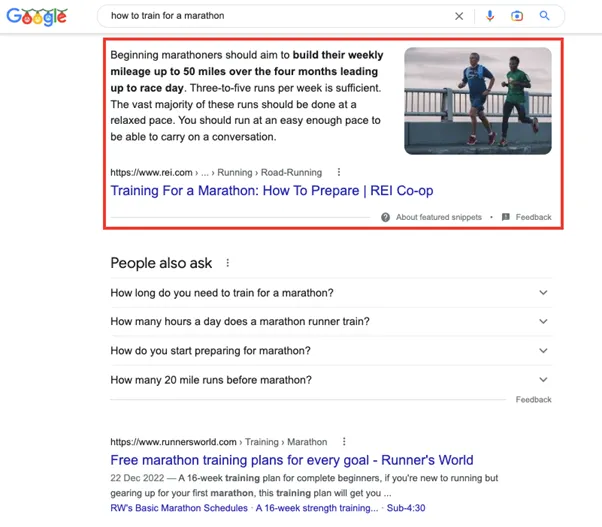
Google automatically generates featured snippets by pulling the relevant information from a web page that ranks for the query in question. They appear in one of four formats: paragraph, list, table, and video.
Paragraph Featured Snippets
These make up the lion’s share of featured snippets. They are usually between 50 and 250 words long and tend to appear for ‘what,’ ‘why,’ and ‘how’ search queries.
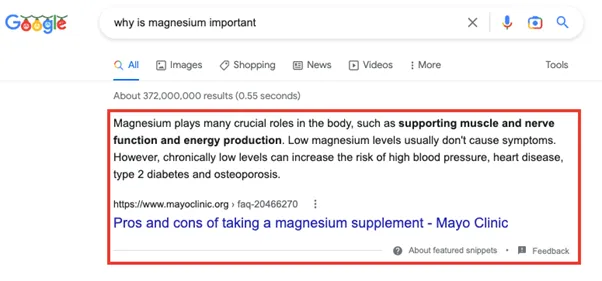
List Featured Snippets
List snippets take the form of bulleted or numbered lists, often appearing for instruction-seeking queries.
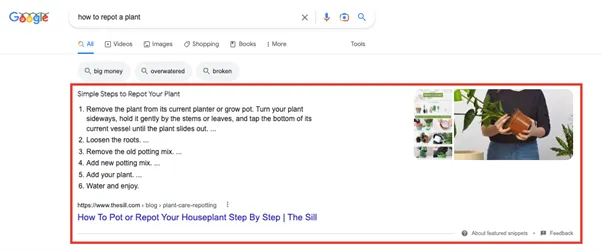
Table Featured Snippets
Table snippets tend to appear for results that rank or compare data.
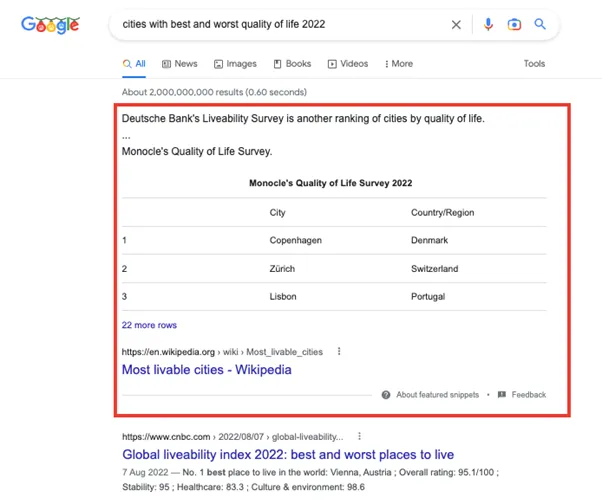
Video Featured Snippets
Video snippets display videos taken from YouTube, either in part or in full. They can appear for all kinds of search queries.
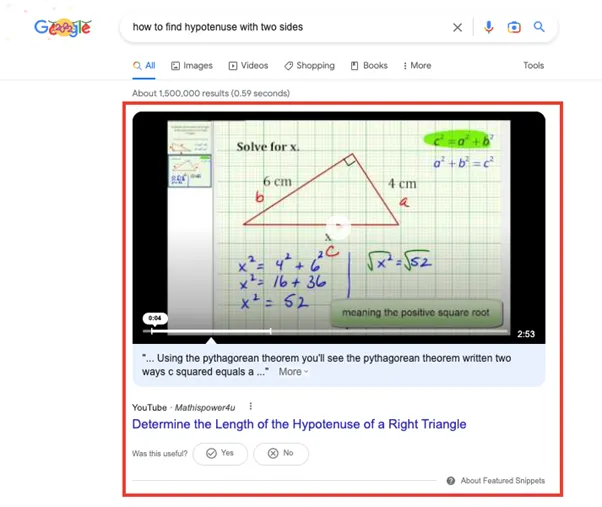
Important note: In the past, a web page used for a featured snippet would also appear as one of the ‘regular’ listings found on page one of Google. This meant the same page could appear twice within a single SERP and attract even more organic traffic. However, since 2020, Google now places the regular listing for any page used in a featured snippet on the second results page.
What Are the Benefits of Ranking for Featured Snippets?
Here are some of the main advantages:
Greater Organic Visibility
The main benefit of winning a featured snippet is that you can occupy prime real estate in Google’s results without earning the regular top-ranking position.
As you can see from the examples above, featured snippets take up a considerable chunk of the SERPs, giving you even more exposure than a regular first-place ranking. This effect is further amplified on mobile devices due to the smaller screen size.
More Click-Throughs
Since featured snippets place you at the top of Google’s results pages, you also get more click-throughs to your website. Snippets claim roughly 35% of all clicks for a given search query.
This might seem surprising at first. But the whole point is to answer queries directly in the SERPs and save users the hassle of clicking through to websites. As a result, you might expect featured snippets to claim a lower share of clicks.
However, the reality is that many queries cannot be fully answered in the limited space Google provides. Users still need to click on the result to discover more context and details.
That said, some snippets do provide users with all the information they need. In such cases, occupying the coveted top spot will not necessarily mean higher click-throughs.
Better Brand Recognition
Earning featured snippets can also improve the perception of your brand.
The fact is some users automatically assume that a website is credible if Google deems it to be worthy of a featured snippet.
Moreover, voice-activated apps like Alexa, Siri, or Google Assistant use featured snippets to answer around 40% of voice searches.
And since 27% of the world’s population uses voice search on mobile, earning a featured snippet can significantly increase your brand’s recognition and authority.
5 Tips to Optimize Your Content for Featured Snippets
Now that you are clear on the benefits of earning featured snippets, let us address how to optimize your content for them.
Note that there is no clear-cut method that will guarantee you a featured snippet. They are determined by Google’s algorithm which regularly changes over time.
The following tips can help maximize your chances of success.
1. Discover What Featured Snippets Are Out There
The first step is to research what featured snippet opportunities exist for keywords you already rank for.
You can do this by manually checking Google or using a keyword tracking tool like AccuRanker, which shows the various SERP features that appear for your target keywords.
Next, make a note of any keywords that trigger a featured snippet and for which you rank in a top ten position. You can then optimize your content in line with the format of the featured snippet (see step 4) and potentially ‘steal’ the listing from your competitor.
2. Look for Untapped Feature Snippet Opportunities
The next step is to look for keywords you do not currently target that could trigger a featured snippet.
Keep in mind they are often generated for long-tail and question-based keywords (who, what, why, how, when, etc.), so try to focus your research on these types of queries.
The simplest approach here is to enter a relevant seed term into Google and make a note of any keywords that appear in the ‘People Also Ask’ and ‘Related Searches’ boxes. Here is an example of the seed term ‘how to repot a plant.’
3. Create Content to Target Featured Snippets
With your new list of keywords, you can start making your content more snippet friendly.
Whether your goal is to optimize existing content, or to create a new piece of content altogether, the information you provide must be clear and concise.
Staying with the above example, suppose you had a post titled ‘how to repot a plant’ and wanted to improve its ability to rank for multiple featured snippets. A good approach would be to ensure that the post also answers the related questions you found during your keyword research.
For instance, you could add a section with the subheading ‘Is it best to repot plants wet or dry?’ And provide a succinct answer beneath it that does not exceed 250 words. You could then repeat the same process for all other related questions.
As well as making it easier for your post to rank for several snippets, this tactic will make your post more intrinsically valuable to readers.
4. Optimize Your Formatting for Featured Snippets
When it comes to optimizing your content, the way you format your content is just as important as the content itself.
Remember, the idea is to make it as easy as possible for Google (and users) to read your content and extract the relevant information to use in a featured snippet. So, when structuring your answers to questions, try to provide a top-level, snippet-worthy answer before diving into more details.
The basic rule for formatting is to ensure your content follows a clear and logical structure. Be sure to use H2 and H3 header tags when formatting questions. And try to incorporate your target keywords into your subheadings. You should also leave plenty of white space between sections, so your content does not appear as one homogenous mass.
Of course, you will also want to ensure that your formatting corresponds with that of any featured snippet you are trying to steal from your competitors. So, for example, if the snippet you want to claim is currently formatted as a table, your content should follow suit.
5. Track Your Featured Snippets
Lastly, you will need to closely track your keyword rankings to determine whether your snippet-optimization efforts are bearing fruit.
As we have already mentioned, a keyword tracking tool like AccuRanker allows you to monitor your keyword performance over time, in addition to giving you a breakdown of which SERP features you own.
For example, AccuRanker’s Aggregated SERP Analysis includes a Historical Graph that tells you how many SERP features (including featured snippets) you have gained over time.
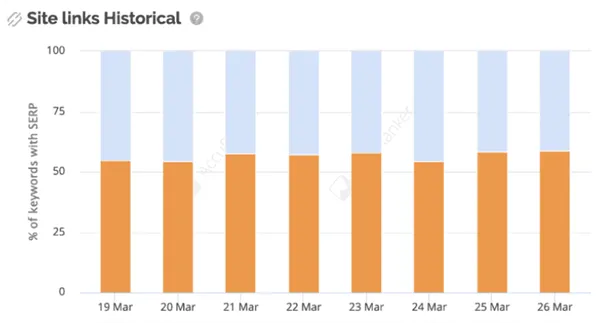
Final Thoughts
Featured snippets make it possible for sites to leapfrog their way to the top of Google without engaging in the cut-throat competition for regular rankings.
For this reason, they represent an excellent opportunity for smaller brands to gain a marginal advantage over better-established competitors in their niche.
We have seen that to boost your odds, your best bet is to target question-based search queries and format your content appropriately.
Now it is time for you to ramp up your featured snippet optimization efforts by putting the above tactics into action.
Start increasing organic traffic with AccuRanker today.
Related blog posts

How LLMs Change Traditional SEO Metrics
Learn why rankings, CTRs, and impressions fail to measure visibility in AI-powered search — and what SEOs should track instead.
15 July 2025LLM Tracking Explained
Learn what LLM tracking is and why being mentioned in AI-generated answers is becoming a vital layer of visibility in SEO.
13 July 2025The Hidden Flaws in Search Volumes and How to Solve Them
Learn how AI Search Volume delivers reliable search volumes by combining GKP, GSC, and Trends so that you can prioritize the right keywords.
1 July 2025




